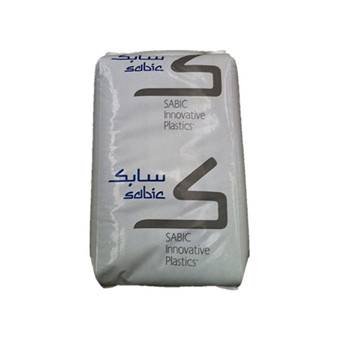
PC/PET XYLEX™ X8300CL GN9C021T SABIC EU
334
- Unit Price:US$ 3,538 /MT
- Packaging Specification:25 KG/PKG
- Packaging Material:Paper bag
- Supply Quantity:62MT
- Delivery Terms:FOB
- Port of Loading :China Main Port
- Accepted Payment Methods:T/T
- Shipping:Negotiate supplier for shipping details
Supplier Information
ASIA PLASTIC EXCHANGE LIMITED
+86 755 ********View
serv********View
+86 ********View
For more details, please contact the supplier!
Material Description
- Material Properties:Flame retardant|High heat resistance
- Application Areas:Automotive Applications|Electronic and electrical accessories
- Color:--
- Grade:Injection grade
Technical Data Sheet
| optical performance | Test Condition | Test Method | Test Result |
|---|---|---|---|
| Refractive index | ISO 489 | 1.539 | |
| transmissivity | 2540 μm | ASTM D1003 | 88.0 % |
| turbidity | 2540 μm | ASTM D1003 | 1.0 % |
| impact performance | Test Condition | Test Method | Test Result |
|---|---|---|---|
| Dart impact | 23°C, Total Energy | ASTM D3763 | 95.0 J |
| flammability | Test Condition | Test Method | Test Result |
|---|---|---|---|
| UL flame retardant rating | 3.0 mm | UL 94 | V-2 |
| Burning wire flammability index | 1.0 mm | IEC 60695-2-12 | 750 °C |
| mechanical properties | Test Condition | Test Method | Test Result |
|---|---|---|---|
| bending strength | Yield, 50.0 mm Span4 | ASTM D790 | 71.0 Mpa |
| --5,6 | ISO 178 | 78.0 Mpa | |
| Bending modulus | --5 | ISO 178 | 1700 Mpa |
| 50.0 mm Span4 | ASTM D790 | 1680 Mpa | |
| elongation | Break | ISO 527-2/50 | > 200 % |
| Break3 | ASTM D638 | 150 % | |
| Yield | ISO 527-2/50 | > 5.0 % | |
| Yield3 | ASTM D638 | 5.0 % | |
| tensile strength | Break | ISO 527-2/50 | 54.0 Mpa |
| Break3 | ASTM D638 | 46.0 Mpa | |
| Yield | ISO 527-2/50 | 55.0 Mpa | |
| Yield3 | ASTM D638 | 47.0 Mpa | |
| Tensile modulus | -- | ISO 527-2/1 | 1600 Mpa |
| --2 | ASTM D638 | 1520 Mpa |
| injection | Test Condition | Test Method | Test Result |
|---|---|---|---|
| drying temperature | 65 to 75 °C | ||
| drying time | 3.0 to 5.0 hr | ||
| Suggested maximum moisture content | 0.020 % | ||
| Suggested injection volume | 40 to 80 % | ||
| Temperature at the rear of the barrel | 240 to 250 °C | ||
| Temperature in the middle of the barrel | 240 to 260 °C | ||
| Spray nozzle temperature | 245 to 265 °C | ||
| Processing (melt) temperature | 245 to 265 °C | ||
| Temperature at the front of the material cylinder | 245 to 265 °C | ||
| Mold temperature | 45 to 60 °C | ||
| Back pressure | 0.200 to 0.500 Mpa | ||
| Screw speed | 20 to 100 rpm | ||
| Exhaust hole depth | 0.013 to 0.020 mm |
| thermal performance | Test Condition | Test Method | Test Result |
|---|---|---|---|
| Hot deformation temperature | 1.8 MPa, Unannealed, 4.00 mm, 100 mm Span9 | ISO 75-2/Ae | 80.0 °C |
| 1.8 MPa, Unannealed, 3.20 mm | ASTM D648 | 75.0 °C | |
| 0.45 MPa, Unannealed, 3.20 mm | ASTM D648 | 79.0 °C | |
| 1.8 MPa, Unannealed, 4.00 mm, 64.0 mm Span8 | ISO 75-2/Af | 78.0 °C | |
| Vicat softening temperature | -- | ASTM D152510 | 91.0 °C |
| -- | ISO 306/B120 | 96.0 °C | |
| Ball Pressure Test | 85°C | IEC 60695-10-2 | 通过 |
| Linear coefficient of thermal expansion | Flow : -40 to 40°C | ASTM E831 | 1.1E-4 cm/cm/°C |
| Flow : 23 to 60°C | ISO 11359-2 | 9.0E-5 cm/cm/°C | |
| Across Flow : -40 to 40°C | ASTM E831 | 1.1E-4 cm/cm/°C | |
| Across Flow : -40°C | ISO 11359-2 | 1.1E-4 cm/cm/°C | |
| Across Flow : 23 to 60°C | ISO 11359-2 | 9.0E-5 cm/cm/°C | |
| thermal conductivity | ISO 8302 | 0.23 W/m/K |
| Physical properties | Test Condition | Test Method | Test Result |
|---|---|---|---|
| Water absorption rate | Equilibrium, 23°C, 50% RH | ISO 62 | 0.20 % |
| Saturation, 23°C | ISO 62 | 0.050 % | |
| Shrinkage rate | Across FlowFlow : 3.20 mm | Internal Method | 0.40 - 0.60 % |
| Flow : 3.20 mm | Internal Method | 0.50 - 0.80 % | |
| Melt Volume Flow Rate (MVR) | 265°C/2.16 kg | ISO 1133 | 15.0 cm3/10min |
| melt mass-flow rate | 265°C/2.16 kg | ASTM D1238 | 15 g/10 min |
| Electrical performance | Test Condition | Test Method | Test Result |
|---|---|---|---|
| Surface resistivity | ASTM D257 | > 1.0E+15 ohms | |
| Volume resistivity | ASTM D257 | > 1.0E+15 ohms·cm | |
| Compared to the anti leakage trace index | UL 746 | PLC 0 |
| hardness | Test Condition | Test Method | Test Result |
|---|---|---|---|
| Shore hardness | Shore D, 10 Sec | ASTM D2240 | 73 |
IMPORTANT NOTES: Plas.com collected the data in the data sheet from the material manufacturers. Plas.com makes the best effort to improve the accuracy of the data, but has no responsibility for the data. We strongly recommend verifying the validity of the data with the material manufacturers before making a final decision.